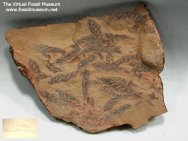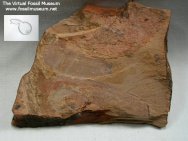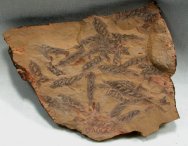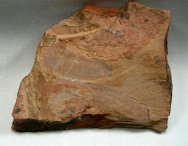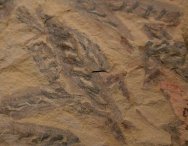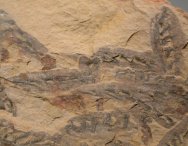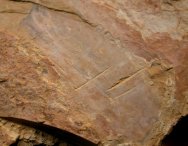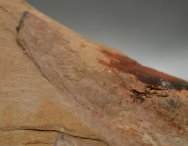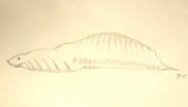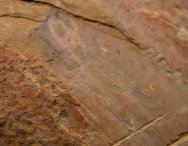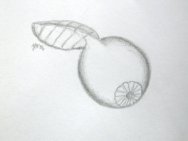Name: Haikouella lanceolata and Vetulicolia; Xidazoon stephanus (Chengjiang Maotianshan Shales)
see Kingdon Animalia
Geologic
Time: Early Cambrian (~525 million years ago)
Size
(25.4mm=1 inch): Haikouella: 15-19 mm long Xidazoon: 85 mm long (folded)
on opposite sides of a 60 mm by 75 mm matrix
Fossil Site: Chengjiang Maotianshan Shales - Quiongzhusi Section, Yu’anshan Member, Heilinpu Formation, Mafang Village, Haikou County, Kunming, Yunnan Province, China
|
One one side is a mass mortality of Haikouella lanceolata, thought by its describers to be the earliest craniate-like chordate. This fish-like animal has many similarities to the contemporaneous Yunnanozoon lividum, but differs in several aspects: it has a discernible heart, dorsal and ventral aorta, gill filaments, and a neural chord. For all these reasons, Chen, Huang, and Li identified it in the seminal Nature paper (Nature 402, 518-522, 02 December 1999) as a chordate. The debate rages on, but whatever the outcome, this creature was much like the ancestor of all the vertebrates. It derives its generic name from its resemblance to the modern day lancet Amphioxus. Such assemblages have been mentioned in the literature, and must represent some catastrophe that overcame them in mass.
|
